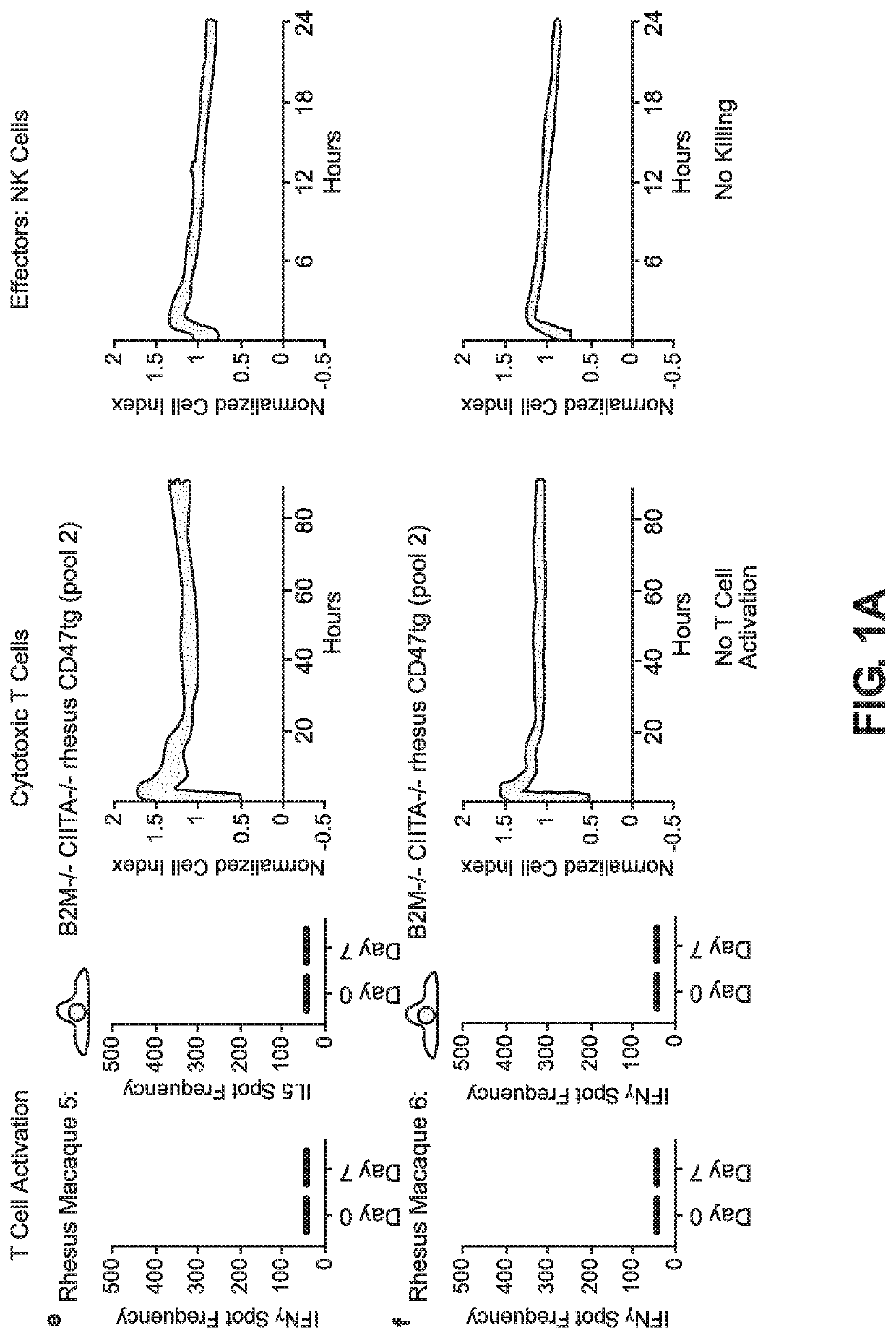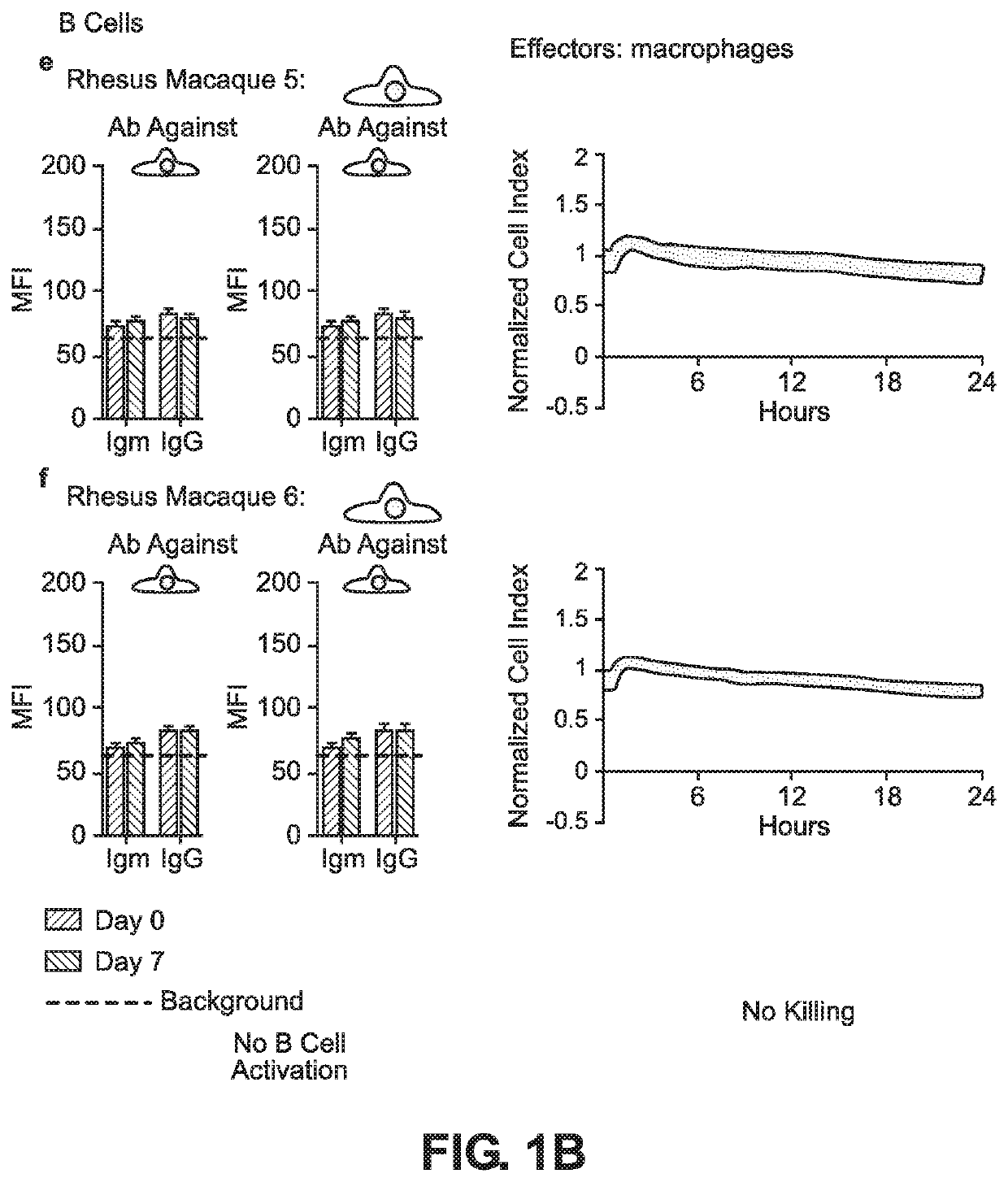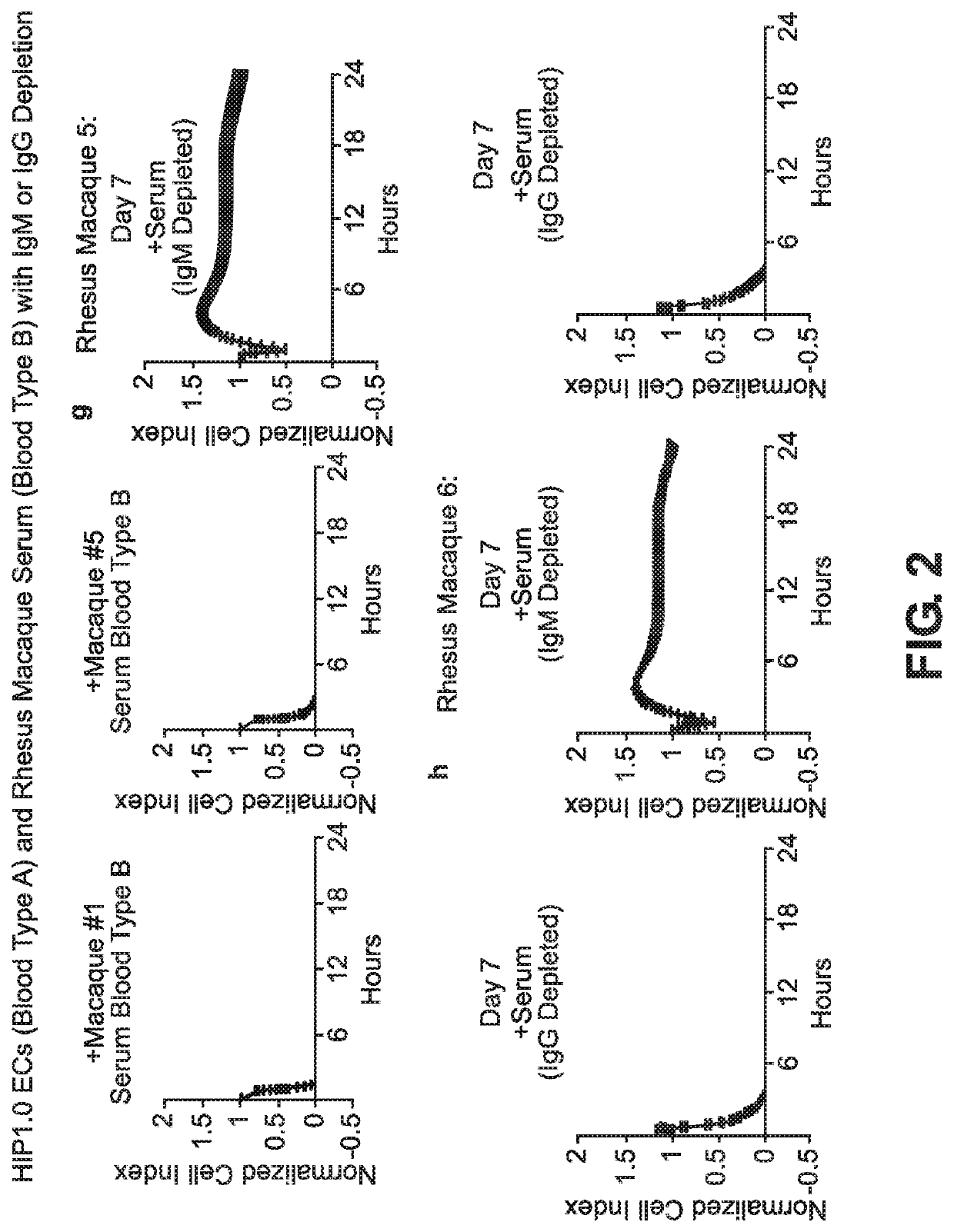BLOOD TYPE O Rh- HYPO-IMMUNOGENIC PLURIPOTENT CELLS
a technology of rh-hypoimmunogenic pluripotent cells and blood type o rh-hypoimmunogenic pluripotent cells, which is applied in the direction of genetically modified cells, skeletal/connective tissue cells, peptides, etc., can solve the problems of reducing the potential efficacy of therapeutics, reducing the positive effects surrounding such treatments, and posing technical and manufacturing challenges. , to achieve the effect of reducing the expression
- Summary
- Abstract
- Description
- Claims
- Application Information
AI Technical Summary
Benefits of technology
Problems solved by technology
Method used
Image
Examples
example 7
G. Differentiation of Human HIPO− Cells
[0278]1. Differentiation of hHIPO− Cells to Human Cardiomyocytes
[0279]This is done using a protocol adapted from Sharma et al. J. Vis Exp. 2015 doi: 10.3791 / 52628, hereby incorporated by reference in its entirety and specifically for the techniques to differentiate the cells. HIPO− cells are plated on diluted Matrigel (356231, Corning) in 6-well plates and maintained in Essential 8 Flex media (Thermo Fisher). After the cells arrive at 90% confluency, the differentiation is started and media is changed to 5 mL of RPMI1640 containing 2% B-27 minus Insulin (both Gibco) and 6 uM CHIR-99021 (Selleck Chem). After 2 days, media is changed to RPMI1640 containing 2% B-27 minus Insulin without CHIR. On day 3, 5 uL IWR1 is added to the media for two further days. At day 5, the media is changed back to RPMI 1640 containing 2% B-27 minus insulin medium and incubated for 48 hr. At day 7, media is changed to RPMI 1640 containing B27 plus insulin (Gibco) and ...
PUM
| Property | Measurement | Unit |
|---|---|---|
| Rh | aaaaa | aaaaa |
| chemical inducer of dimerization | aaaaa | aaaaa |
Abstract
Description
Claims
Application Information
 Login to View More
Login to View More - R&D
- Intellectual Property
- Life Sciences
- Materials
- Tech Scout
- Unparalleled Data Quality
- Higher Quality Content
- 60% Fewer Hallucinations
Browse by: Latest US Patents, China's latest patents, Technical Efficacy Thesaurus, Application Domain, Technology Topic, Popular Technical Reports.
© 2025 PatSnap. All rights reserved.Legal|Privacy policy|Modern Slavery Act Transparency Statement|Sitemap|About US| Contact US: help@patsnap.com



